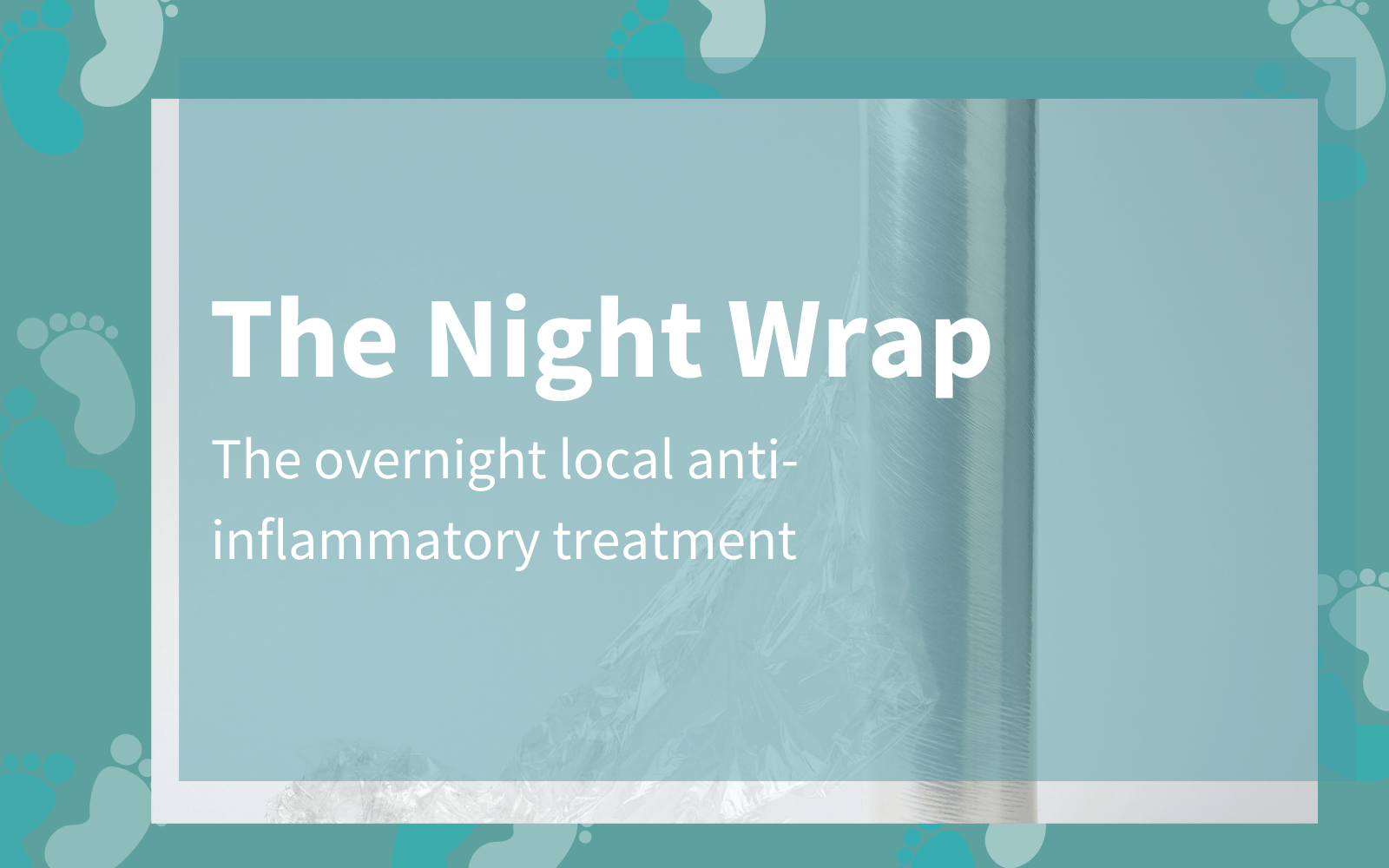
It was over 20 years ago that I was first introduced to this off-label treatment and I believe it still has its place in the management of many soft tissue injuries and niggles.
So, What Is a Night Wrap?
No, it’s not a facial rejuvenation technique; it’s an overnight local anti-inflammatory treatment for inflamed tendons, joints, ligaments and bursas.
Over 20 years ago, I was the injured runner in need of a quick fix. As part of the treatment plan for a painful and inflamed achilles tendon, I was advised to apply the night wrap for 4 nights. I was provided with very specific instructions and a rationale for its effectiveness. To my delight, it worked, quickly.
It’s worth noting, I had visible swelling with crepitus (creaky sensation as you point the foot down and up), so my injury was related to the peritendon (sheath lining the tendon) and hence why this treatment worked so well. This treatment is not going to work well for chronic/degenerative related tendon pain.
The night wrap is a cocktail of topical anti-inflammatory, and anti-coagulation medication and works best when there is swelling, crepitus or ecchymosis (bruising).
What follows is a description of the technique, how it’s proposed to work and what injuries it works best for.
What You’ll Need for the Night Wrap
- Diclofenac gel (E.g. Voltaren gel)
- Hirudoid cream
- Glad wrap/cling film
Steps for the Night Wrap
- Just before going to bed, massage a small amount of equal parts Hirudoid and Diclofenac into the painful area for 2-3mins until it has been absorbed into the skin.
- Apply an additional larger quantity of the cream and gel and lightly mix together on the skin. Leave this as a thick layer on top of the skin.
- Wrap up the injured area in glad wrap/cling film and you’re done!
- Go to bed and let the night wrap do its thing.
Note: If the injured area is around a boney prominence, like the achilles insertion into the heel, then apply a thin piece of gauze on top of the layer of cream/gel to help keep it in place and not slide off the area when wrapping it up or when in bed.
How does the Night Wrap Work?
Its proposed mechanism is by providing a sustained and high dose (compared to just massaging it in) topical anti-inflammatory effect. Depending on how much sleep you get, the cream can get a decent 8 hours or so of time to do its thing while you’re in bed, so it’s working while you sleep.
The addition of Hirudoid cream is especially helpful for injuries where bruising is present or when there’s tendon crepitus (swelling around a tendon sheath often causing a creaking sensation). Its mode of action is to inhibit the formation of fibrin which is associated with the development of crepitus.
As well as keeping the gel against the skin and off the bed sheets, the glad wrap may reduce the amount of evaporation of the cream off the skin, providing a higher active dose at the injury site.
The great thing about this treatment is that it’s topical (i.e. doesn’t have the same gastro side effects or liver stress of oral medication).
The down side is that it only works well for superficial injuries – the deeper the injury the less effective this treatment will be.
Injuries I Frequently Recommend the Night Wrap for Include:
- Achilles, peroneal and tibialis posterior tendonitis (when acutely overloaded or when there’s uniform tendon thickening or crepitus)
- FHL tenosynovitis
- Ankle sprains
- ITB syndrome (outer knee pain)
Don’t do what a friend of mine did and use a heat cream like Deep Heat or Tiger Balm as part of a night wrap – by all accounts it was not a pleasant experience!
Caution: Don’t use these if you’ve had a previous adverse reaction to either medication. We are a not doctors, we are a team of Sydney podiatrists. Seek medical advice immediately if any adverse reaction occurs.